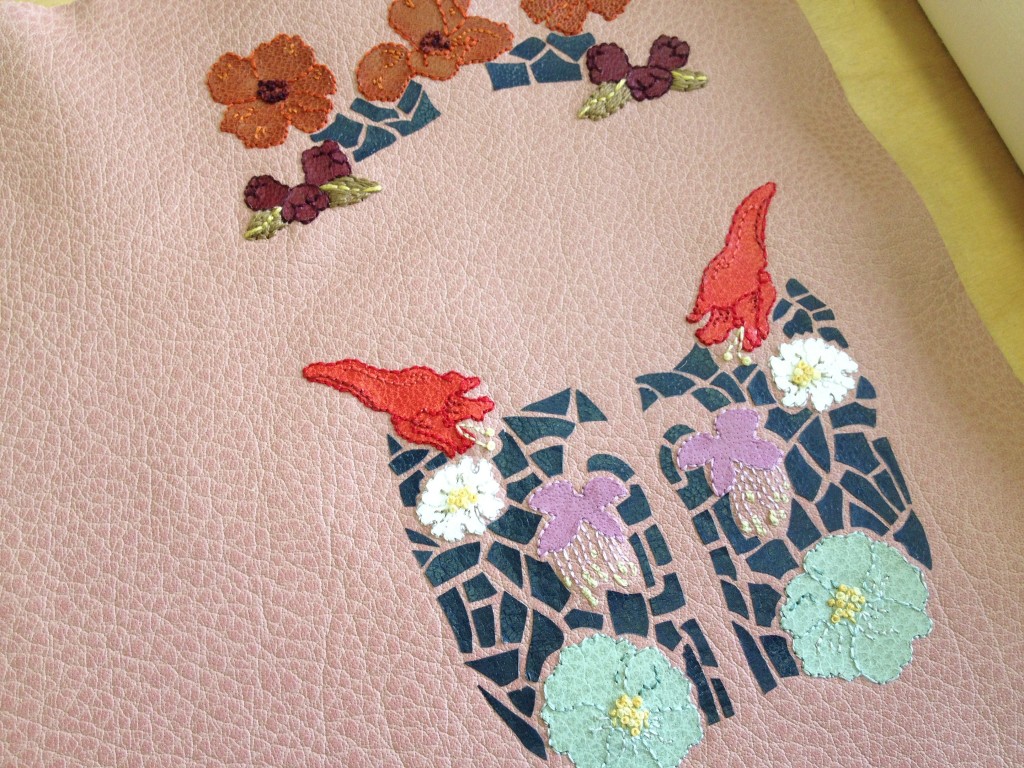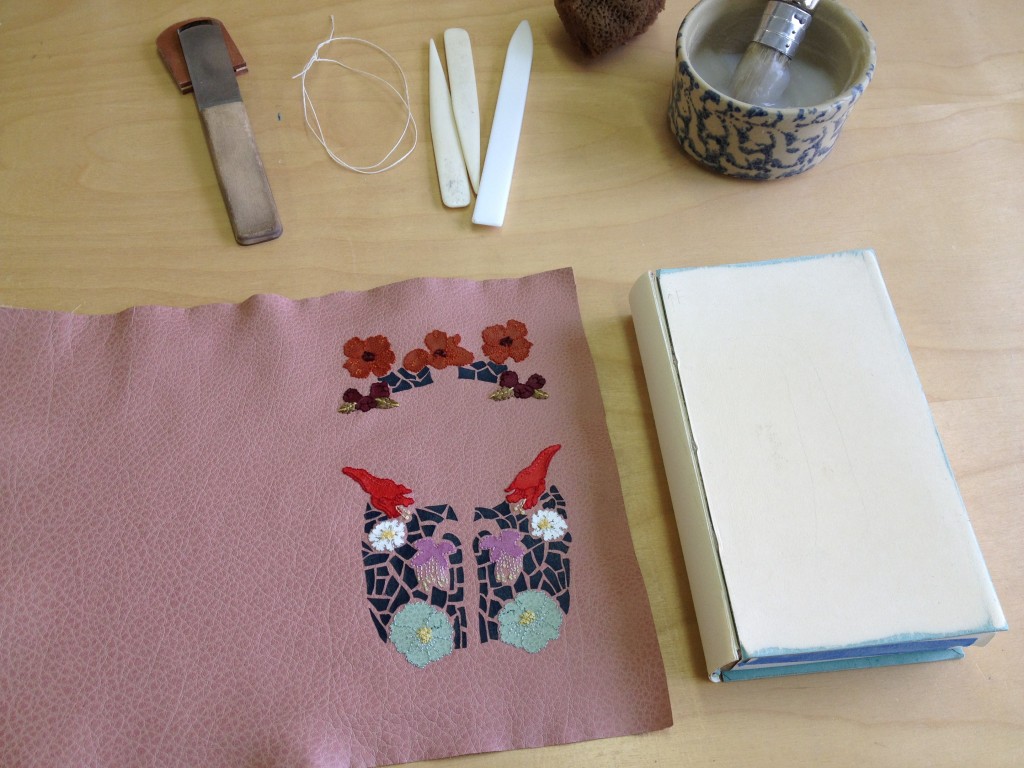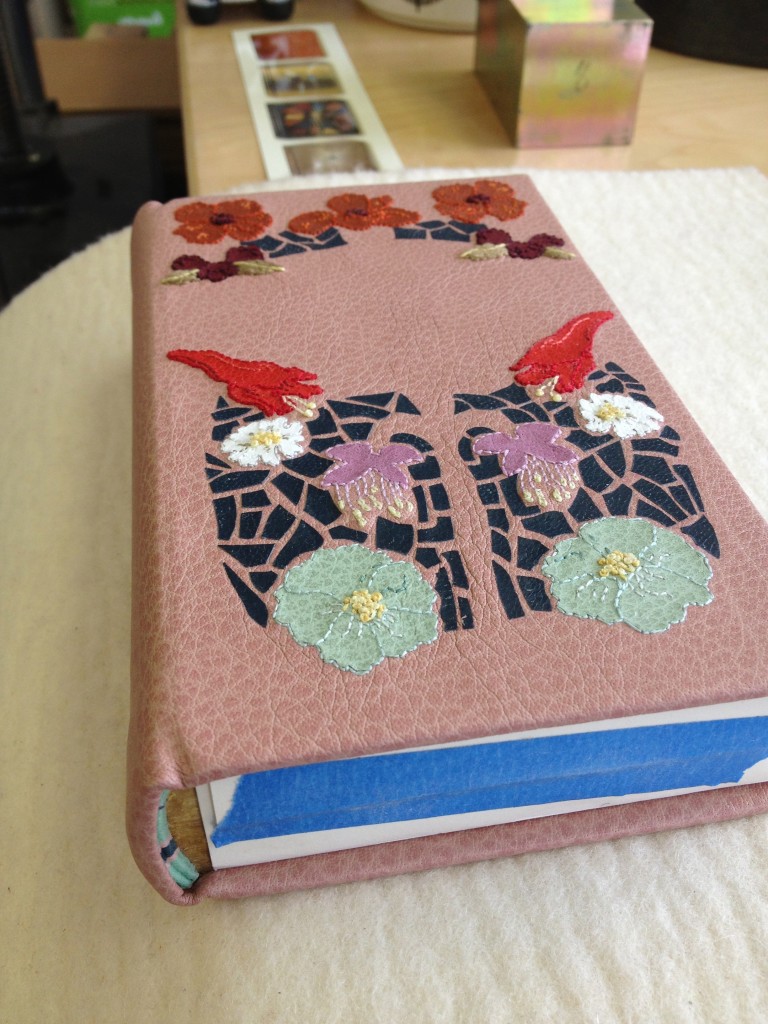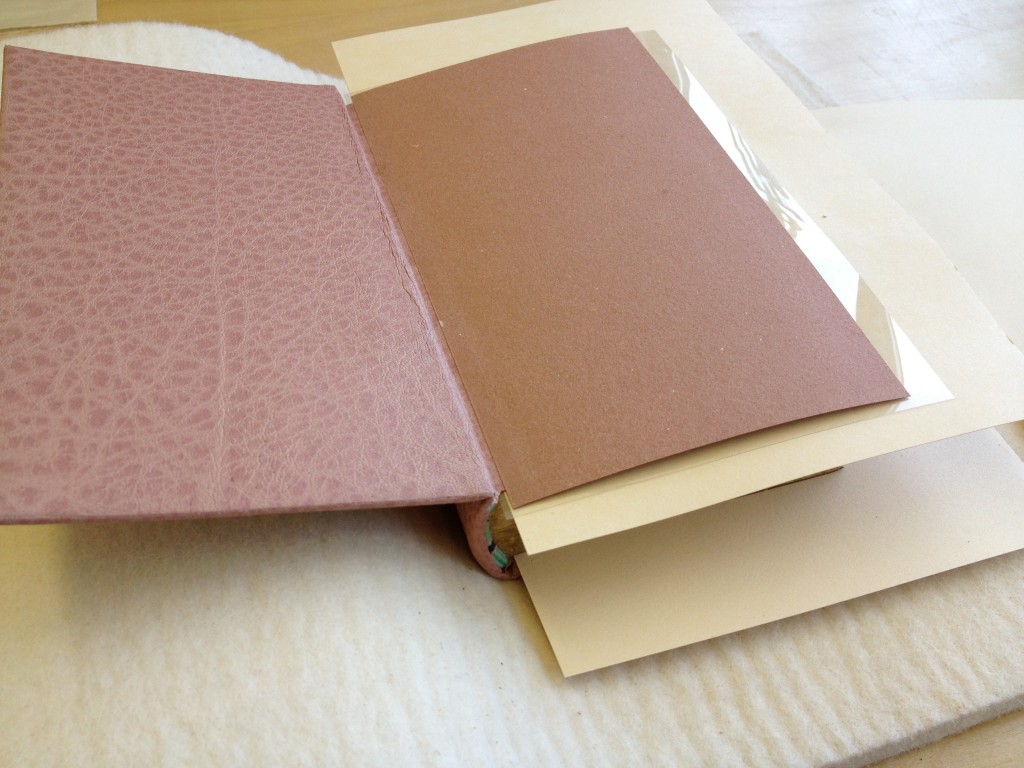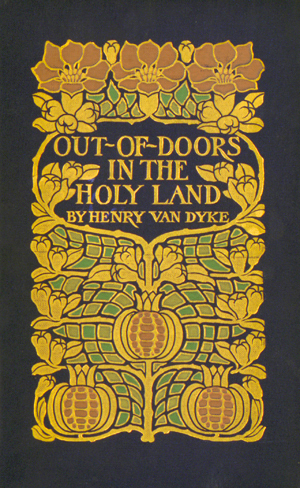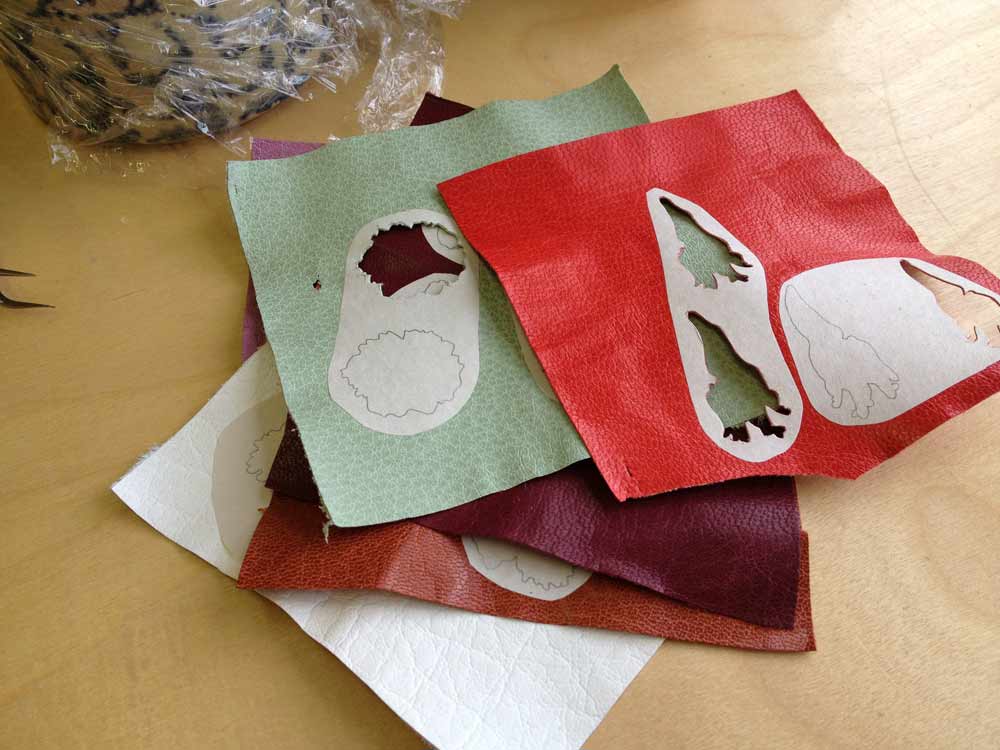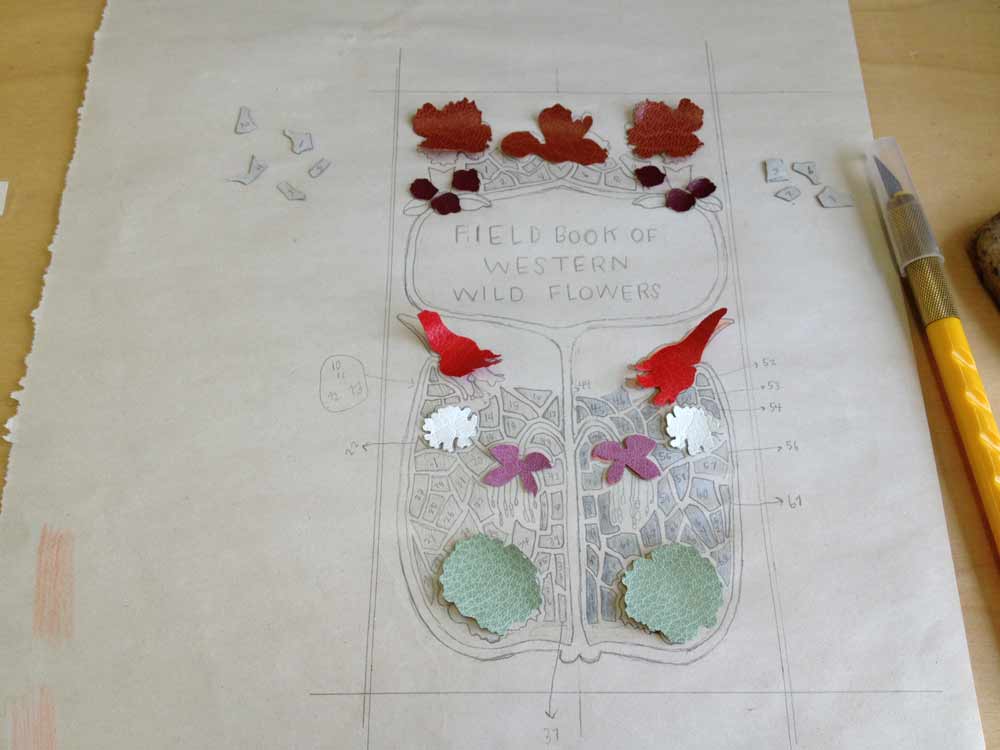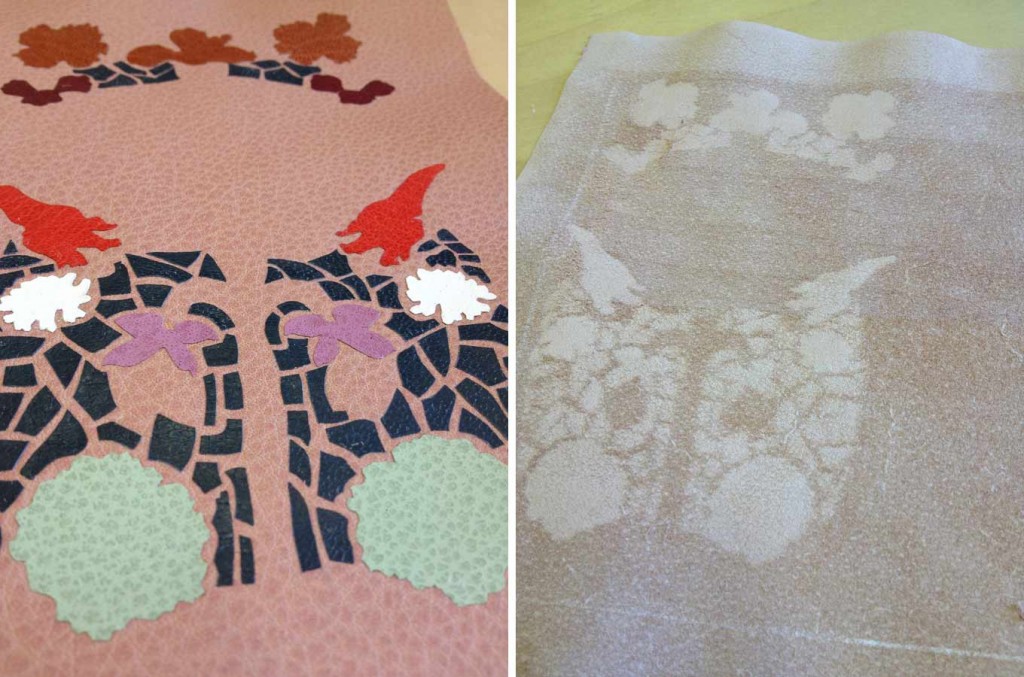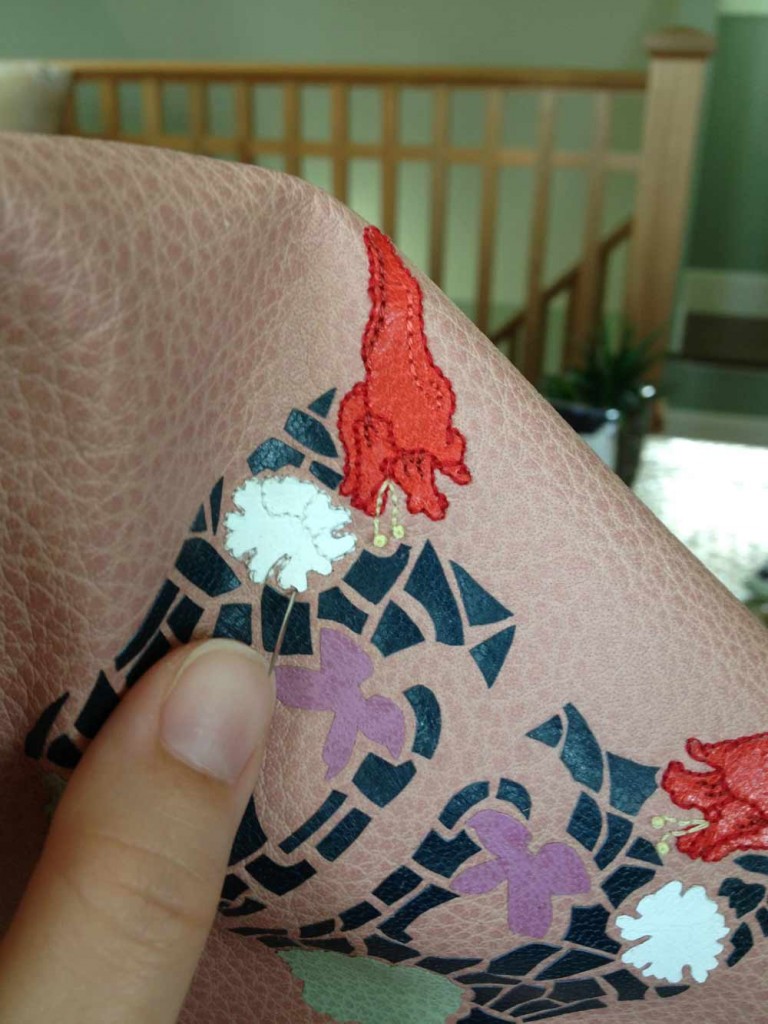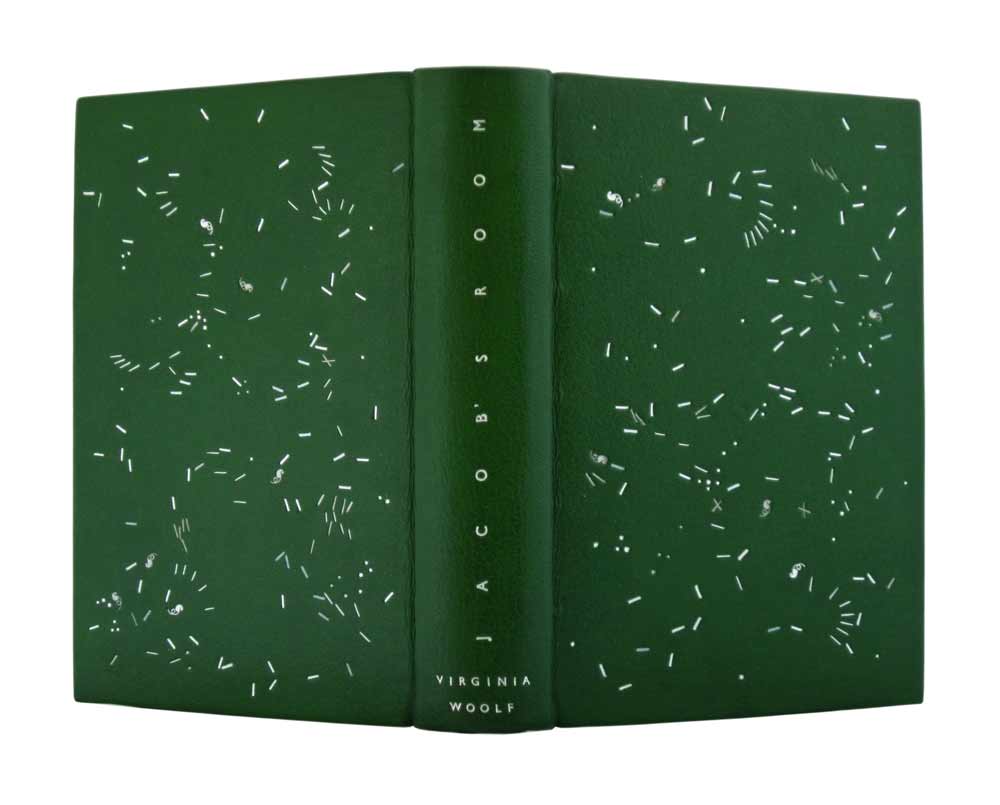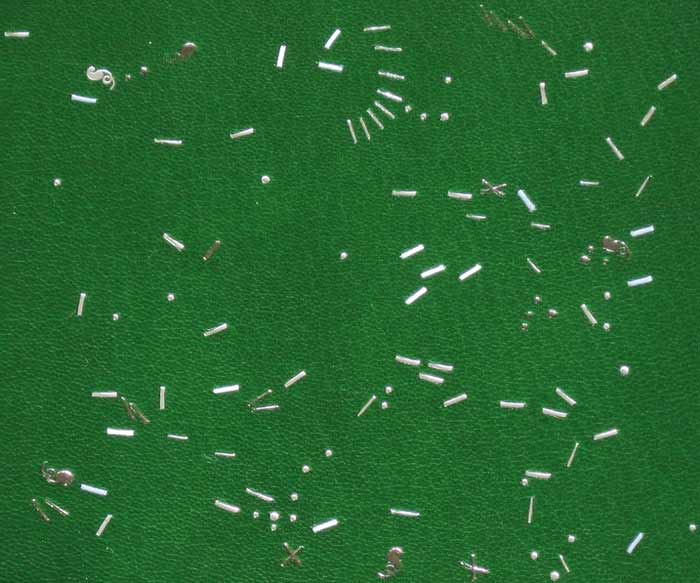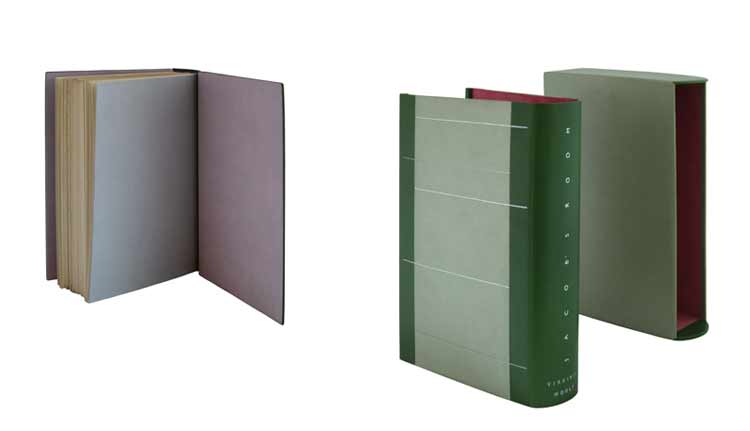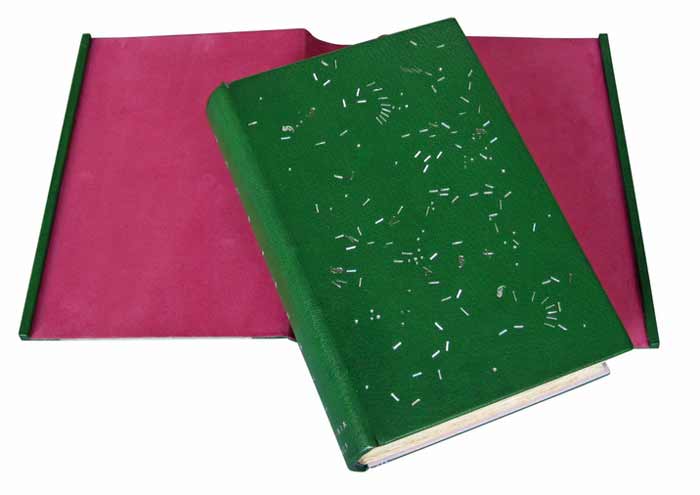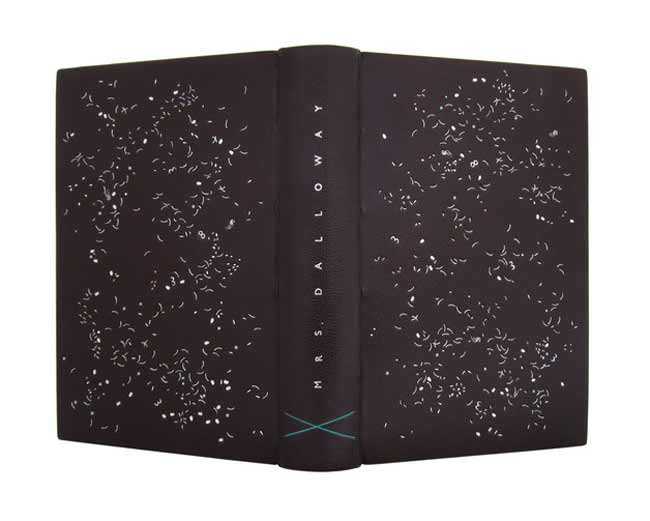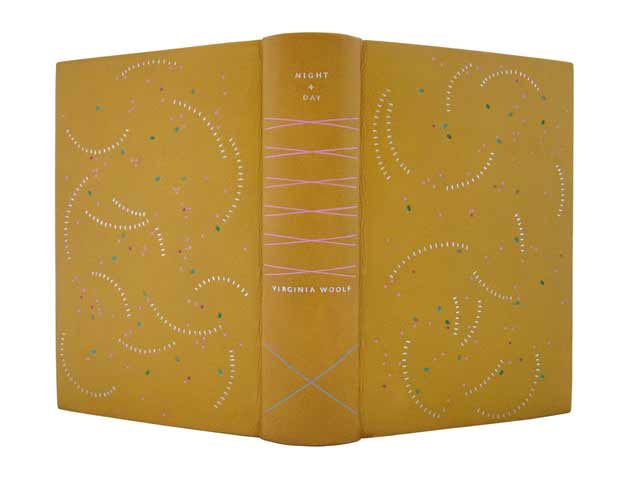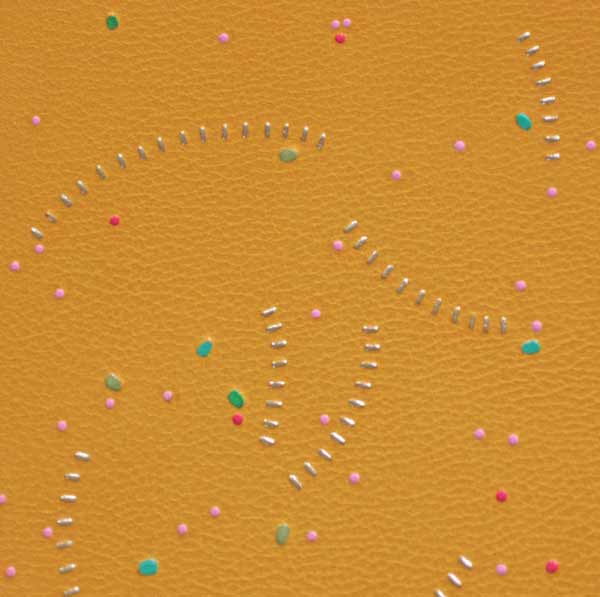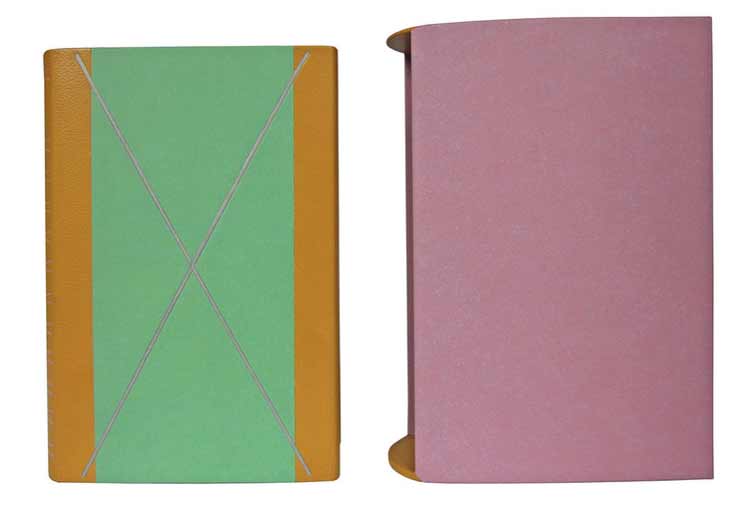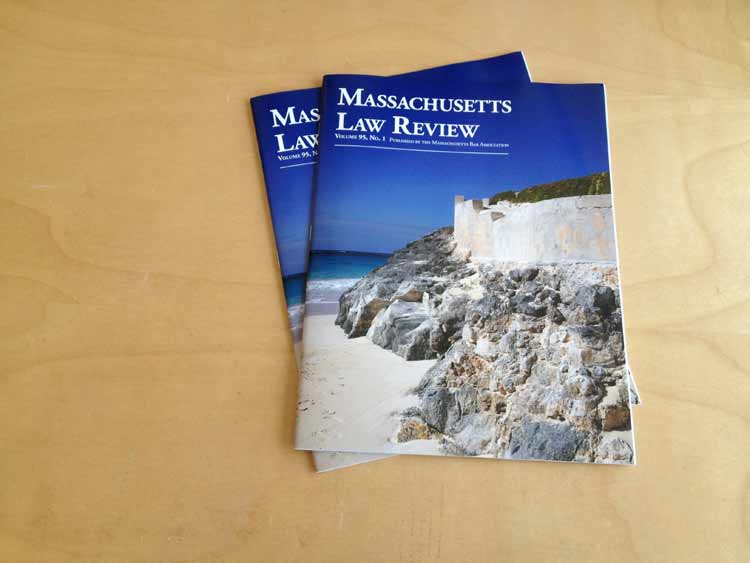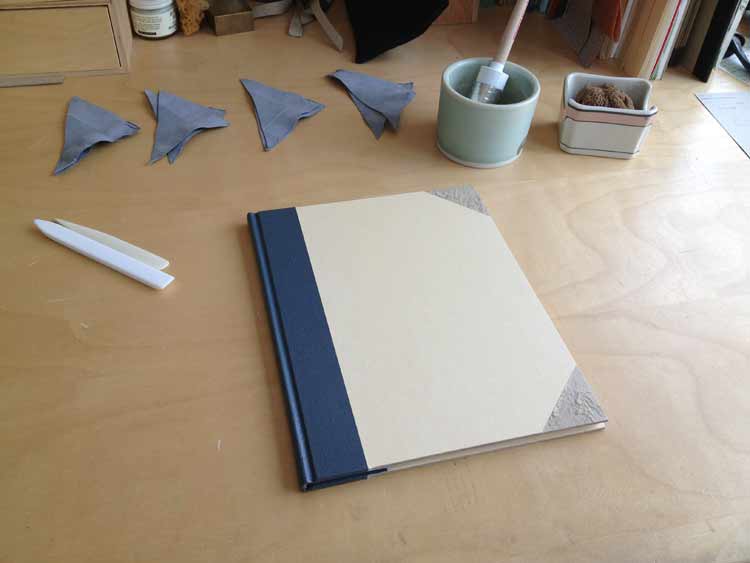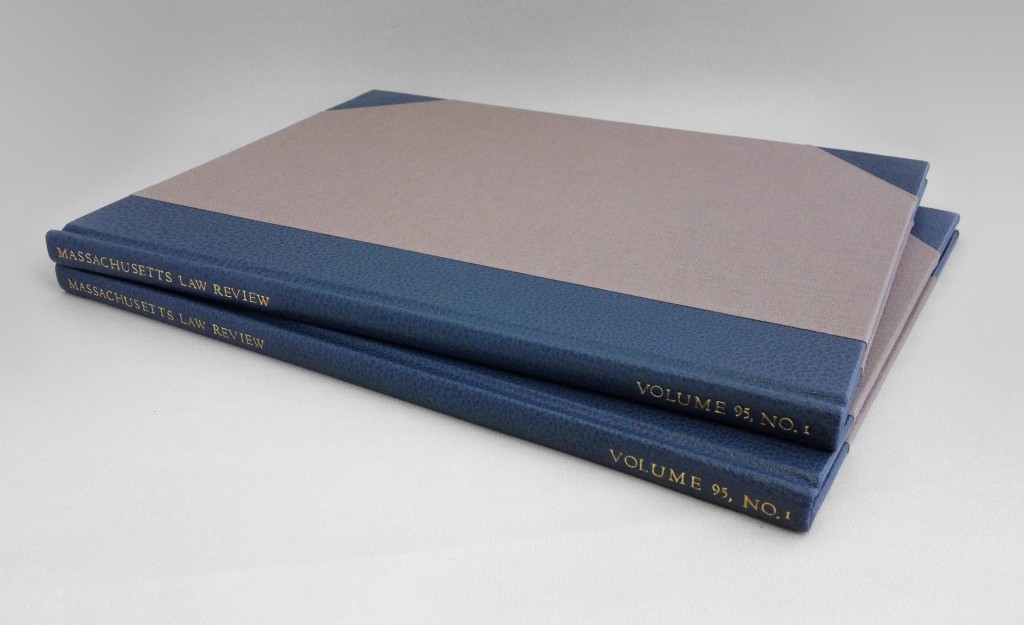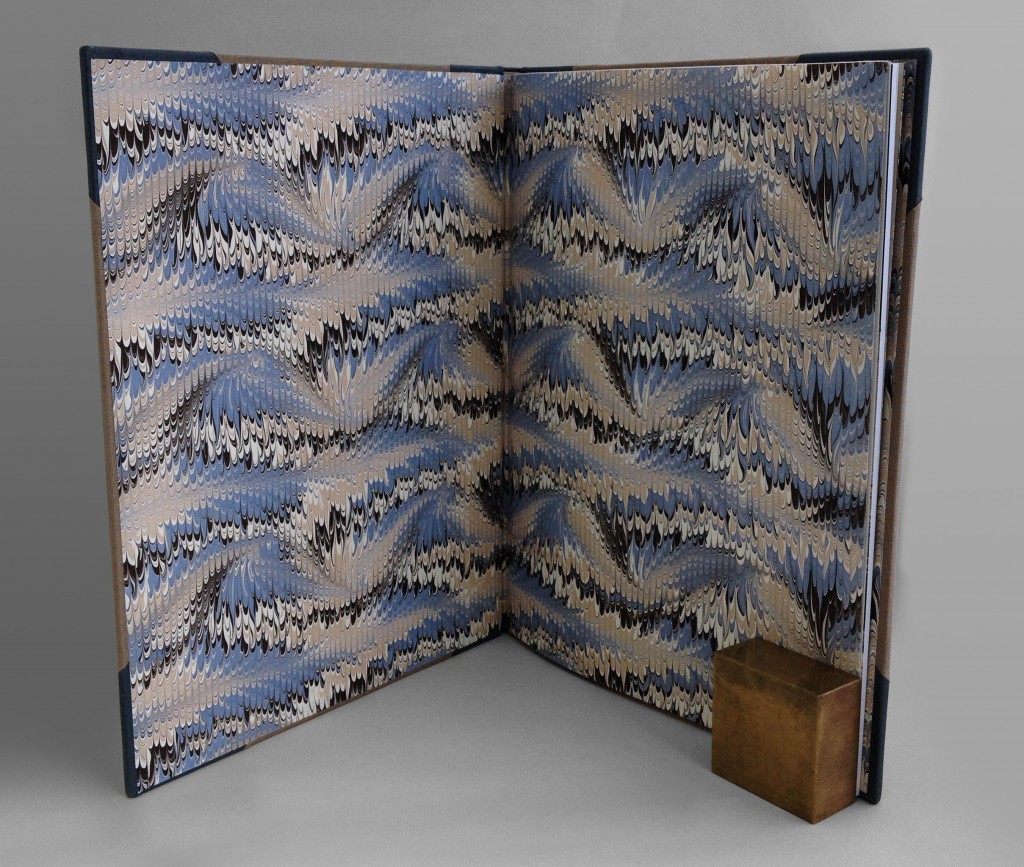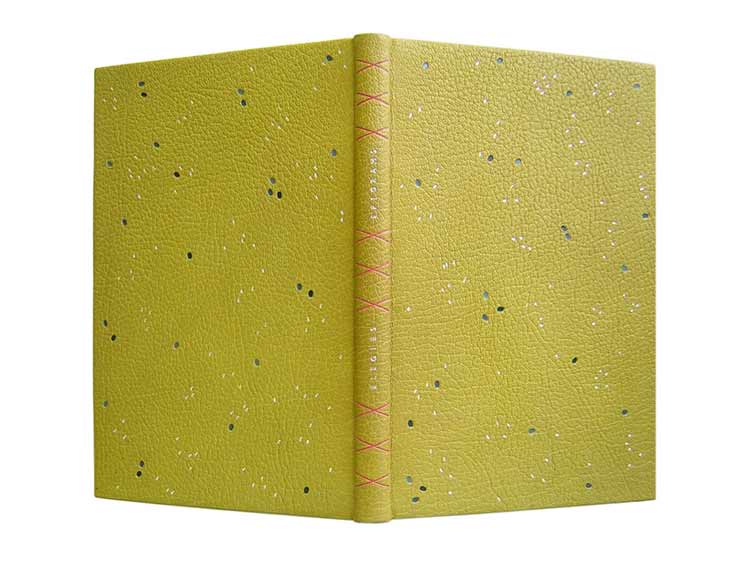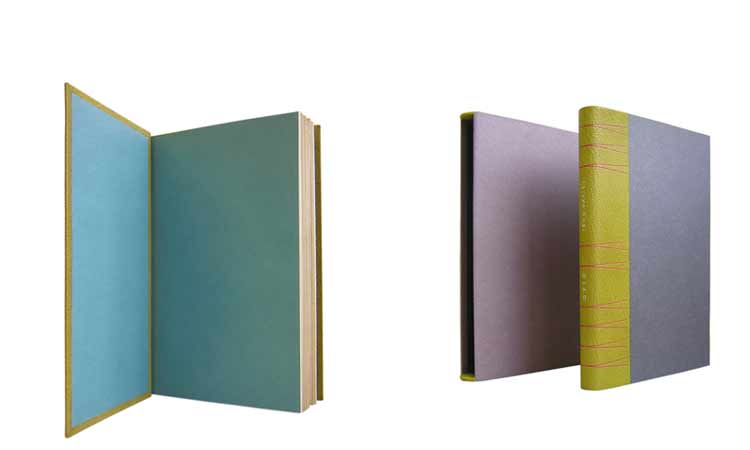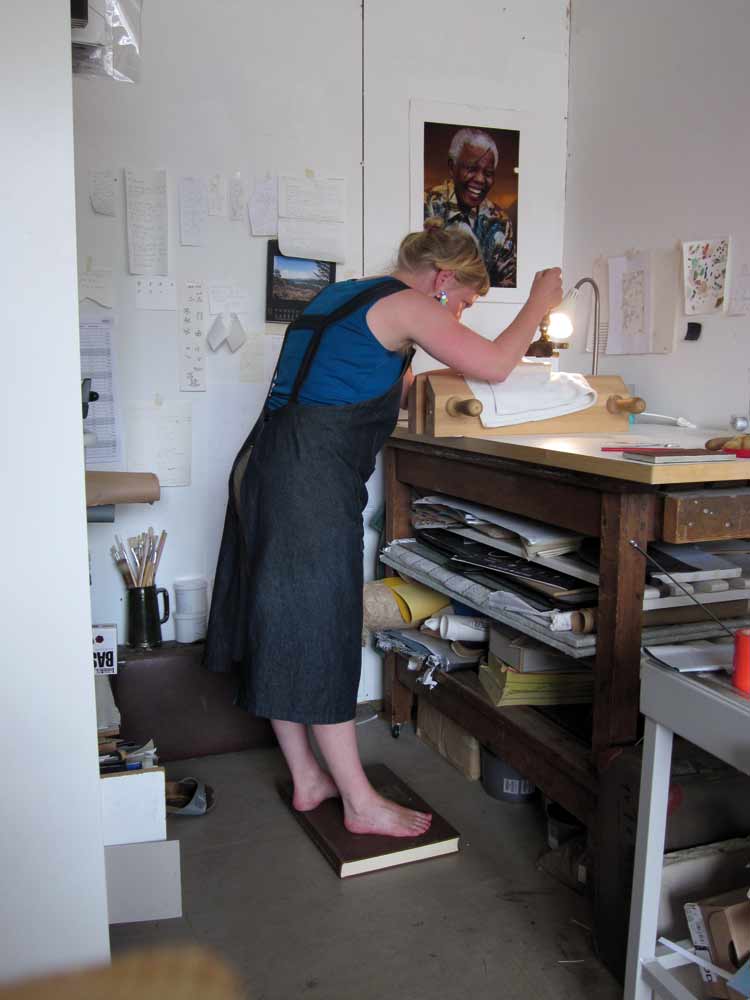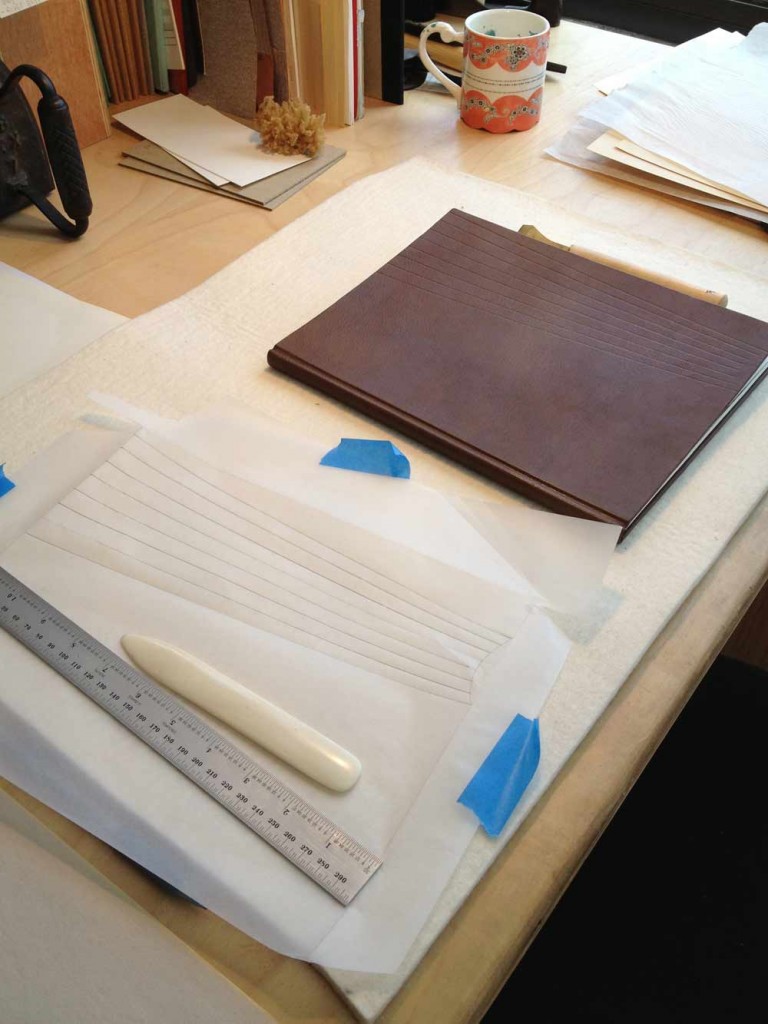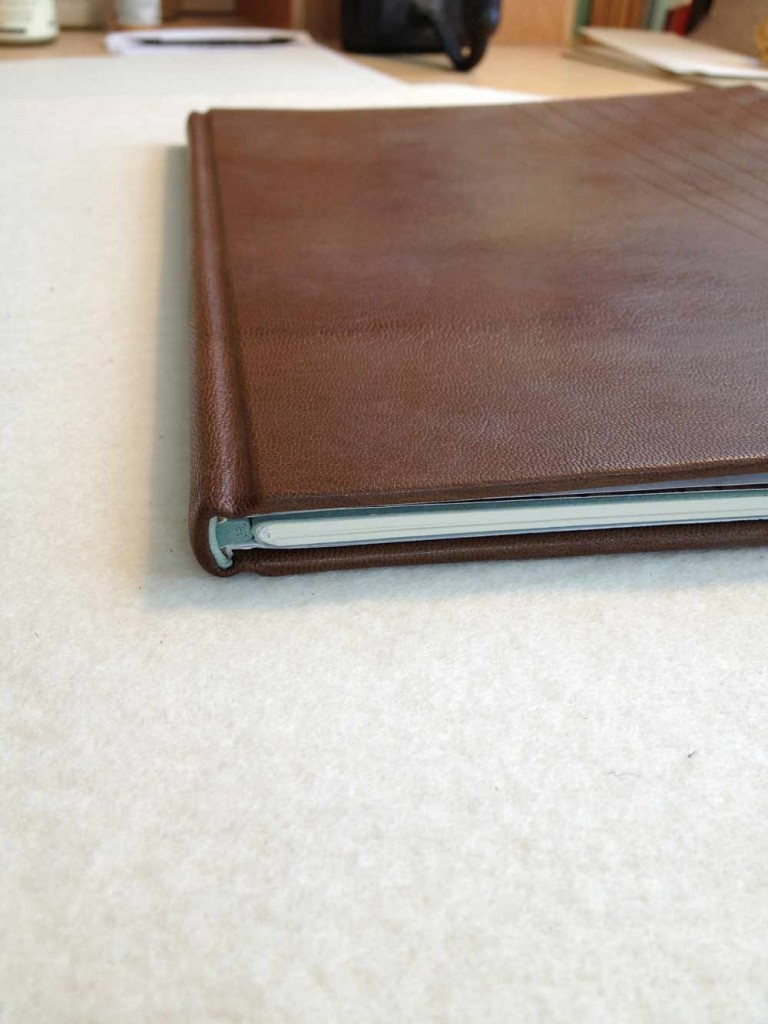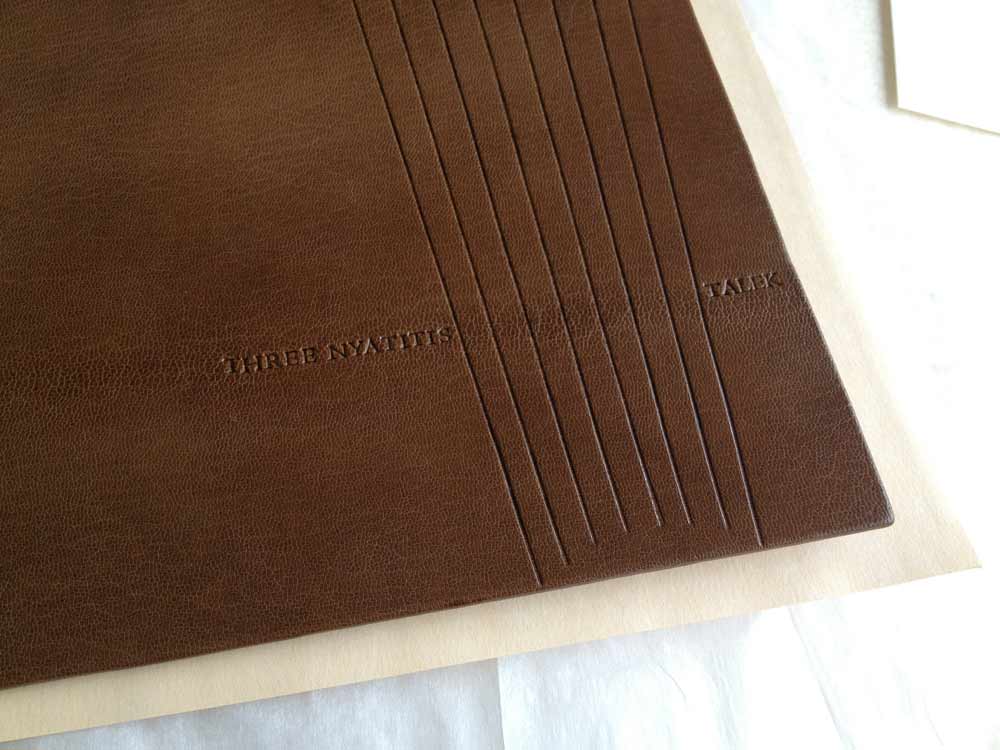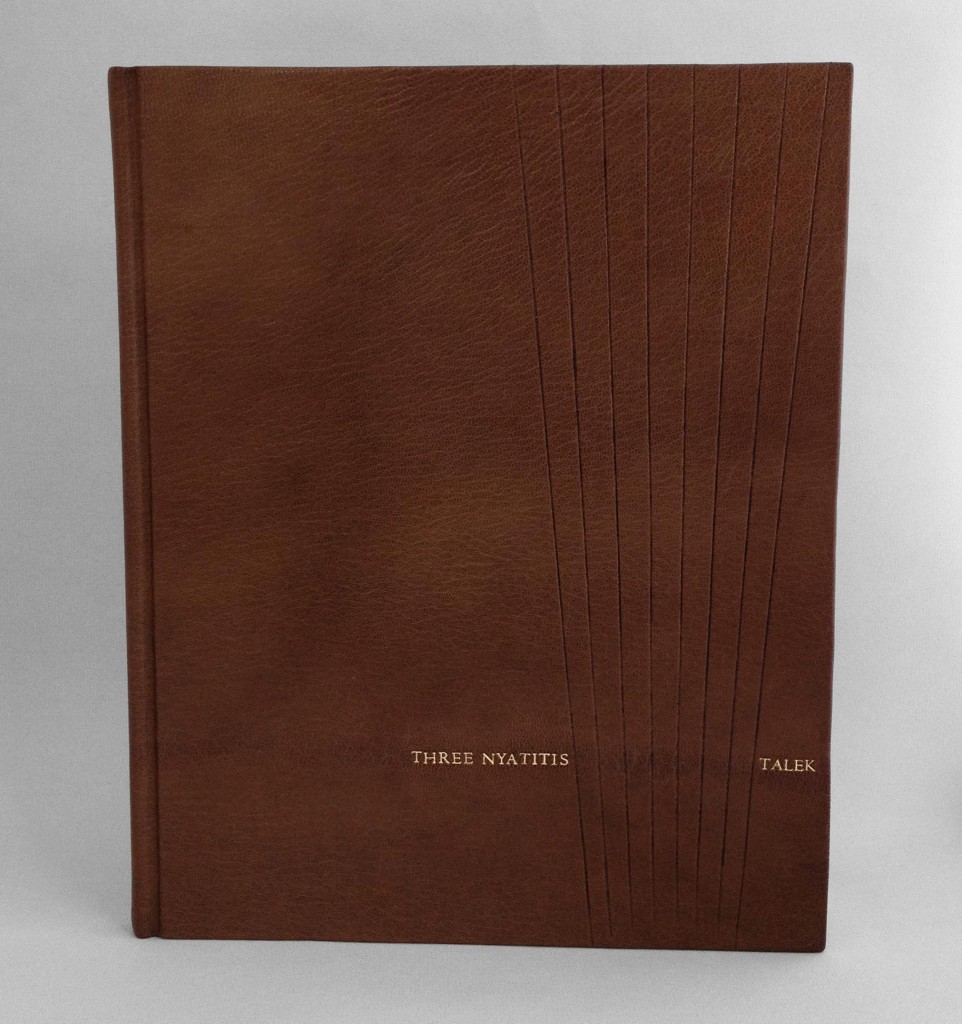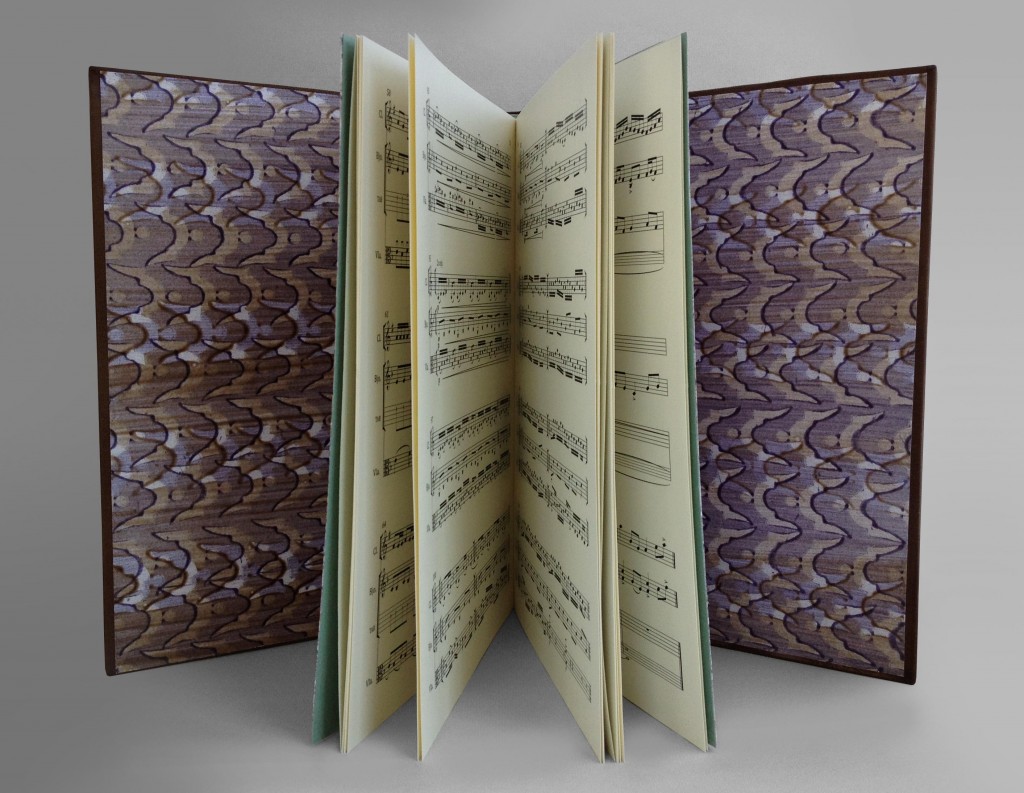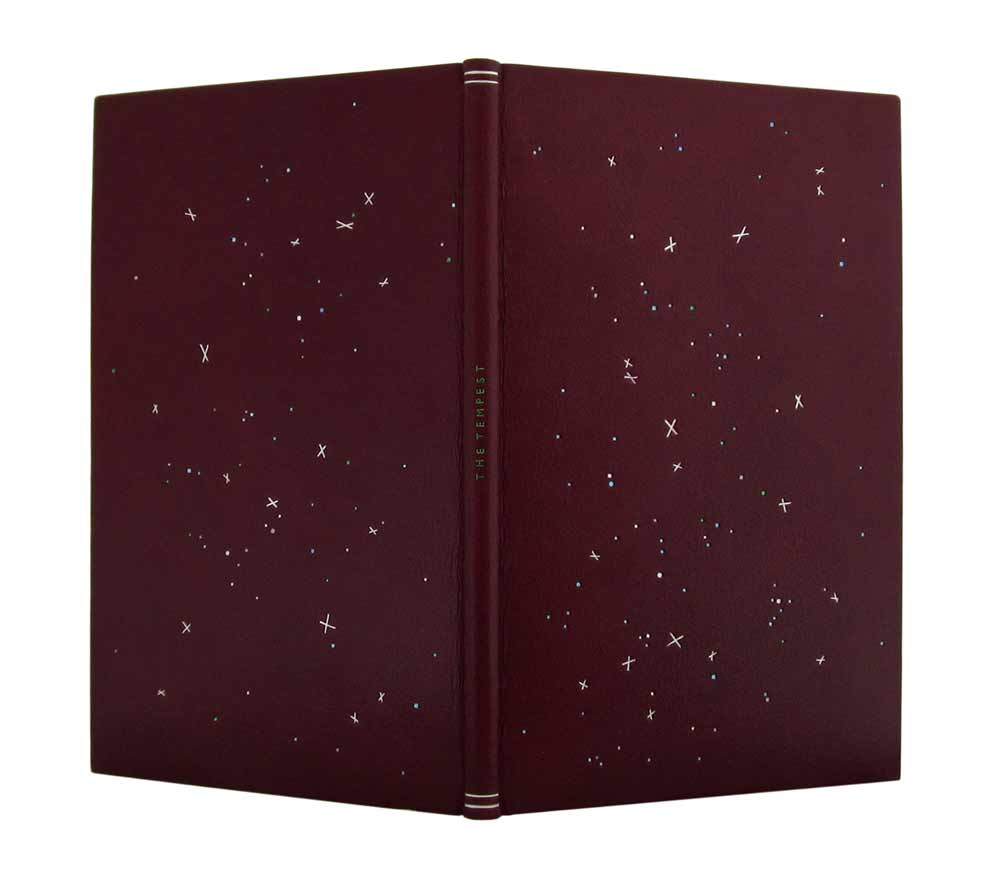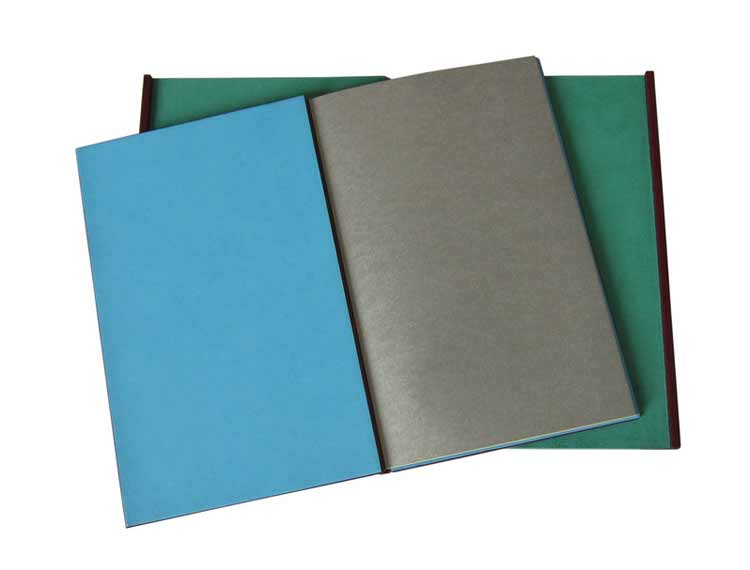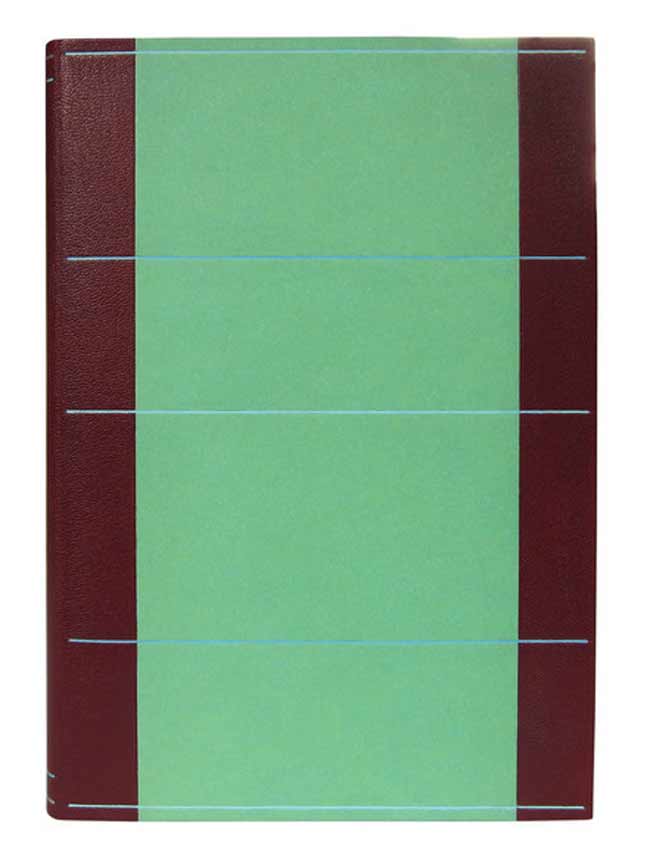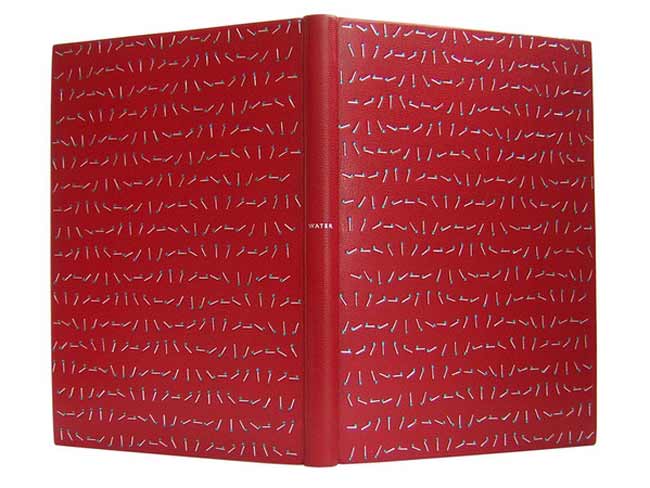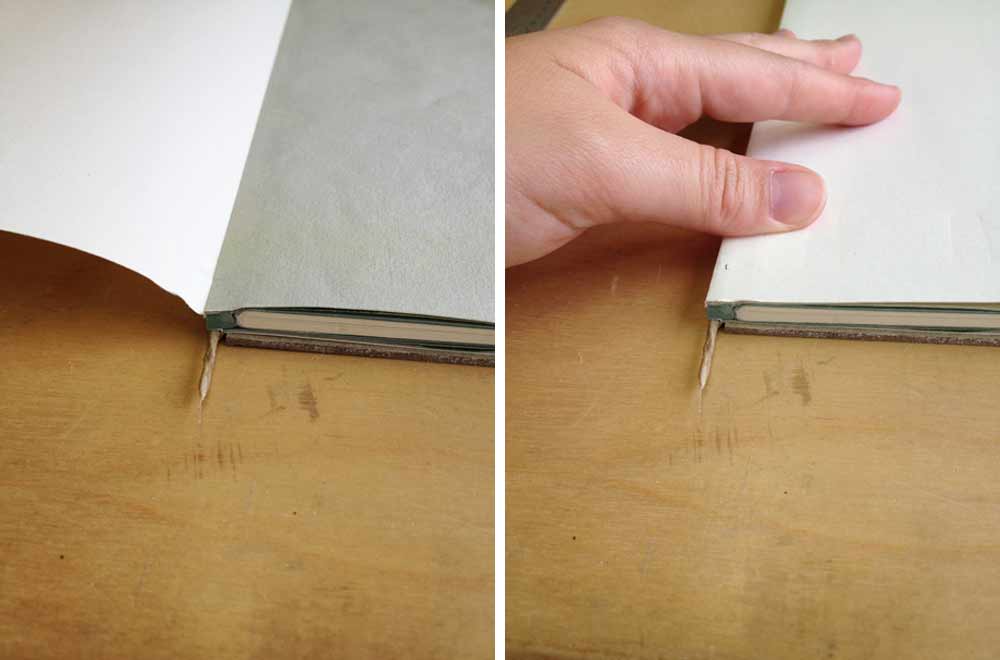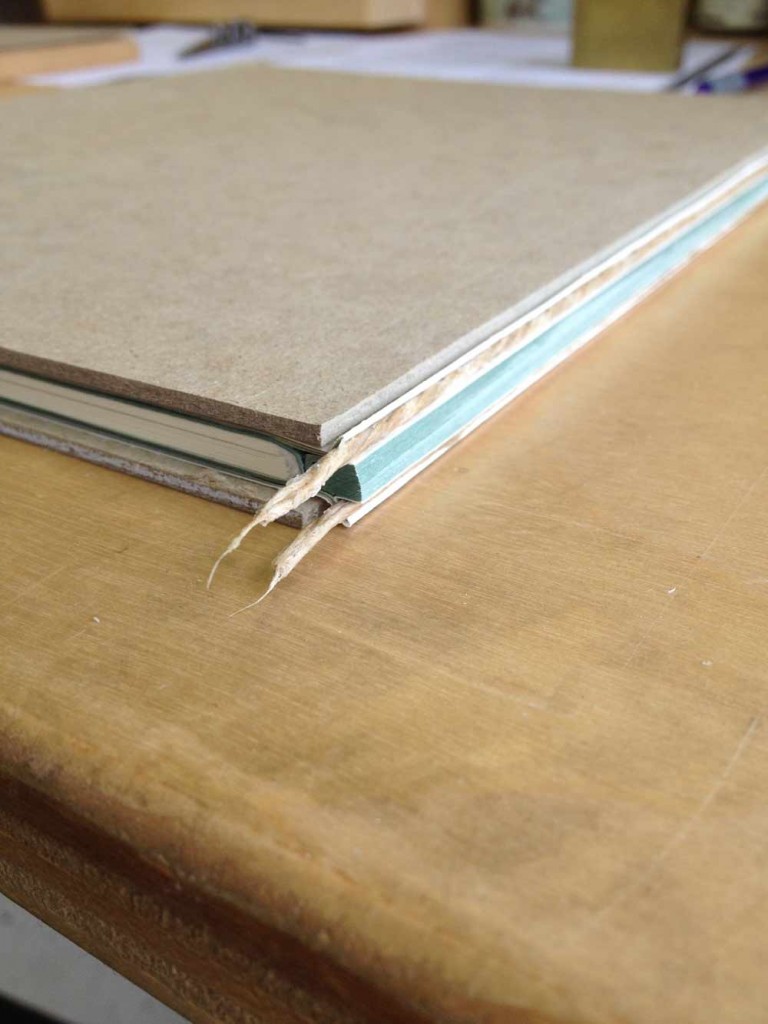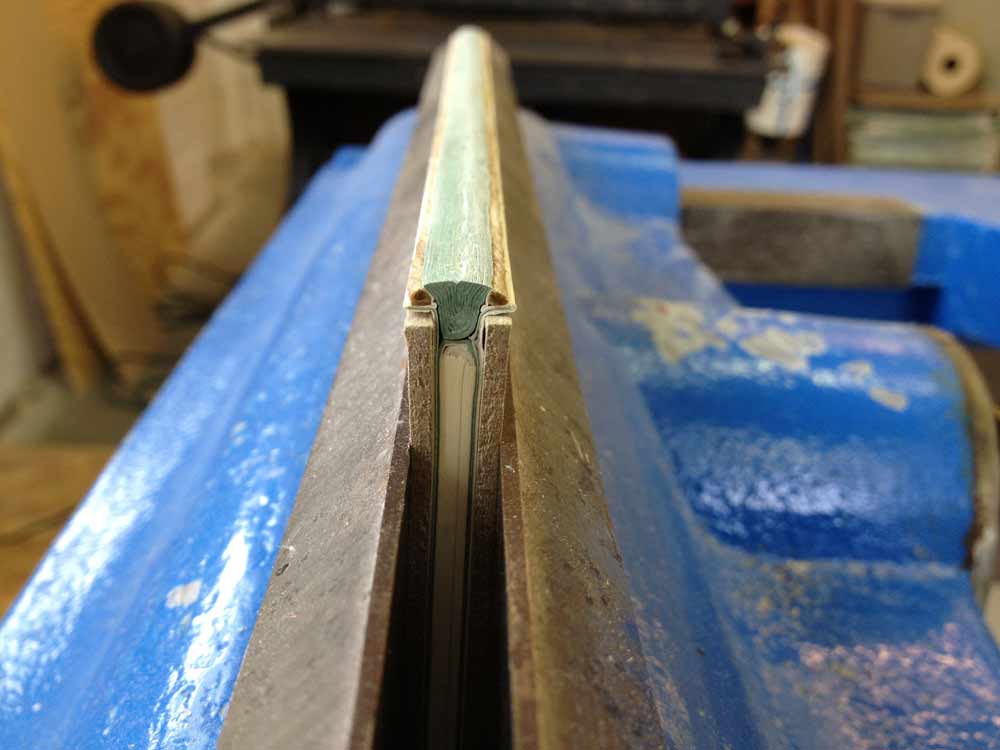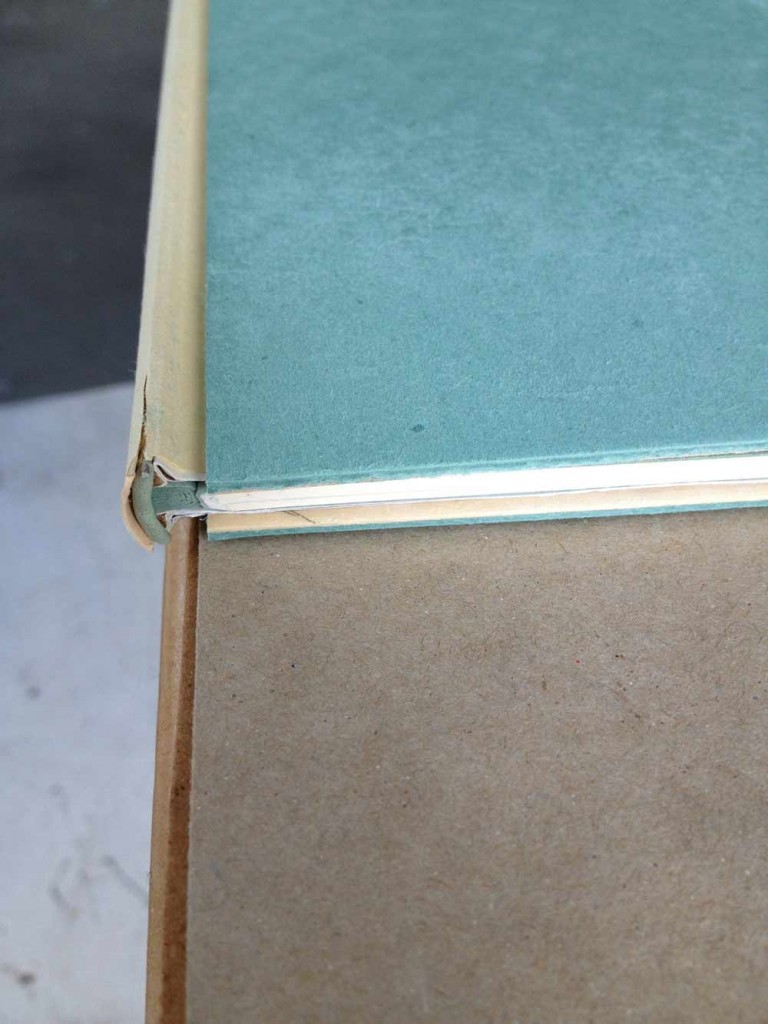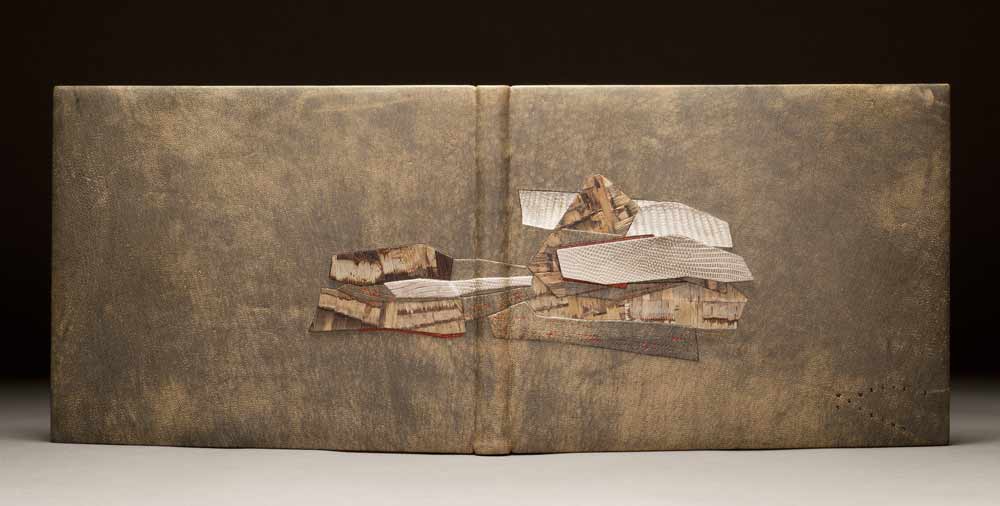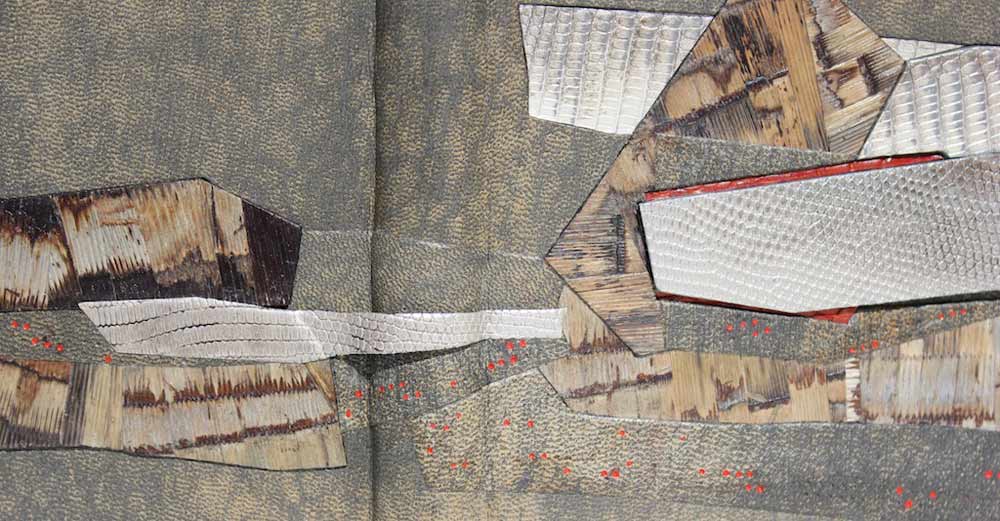If you missed part one, you can find it here.
After hours of embroidery work, I was finally ready to cover the binding. The book itself had been removed from its original case binding, taken apart signature by signature and resewn. Once rounded and backed with boards attached, the edges were ploughed and sanded down in preparation for edge decoration. At this point, I had been filling in for Jeff Altepeter at North Bennet Street School and conveniently the students already had everything set up for edge decoration and gilding. I spent the day perfecting the edge, experimenting with the application of gouache through various brushes and sponges. Finishing off the edge with the sprinkling of gold leaf.
The hand sewn double-core French headbands came next. I love sewing my headbands in an asymmetrical pattern and by extracting colors from the binding. Sadly, I didn’t take any in-progress photos of these two steps, but you can see hints of the edge and headband in some of the images to follow.
Now, back to covering.
After applying a healthy dose of wheat starch paste, the embroidered leather was wrapped around the binding, being folded and tucked and squished into place. The leather had expanded after paring more than expected, so covering became difficult to keep the shape of the design within the confines of the board.
The covered binding was put to rest under control weight between a bed of felt and acrylic boards. The next day I eased open the boards. Once the finishing design elements were added to the front cover I was able to line the inside of the boards and joint with matching edge to edge leather doublures. The handmade paper fly leaves are a perfect color match and came to me by happenstance from papermaker Katie MacGregor at Standards last year.
Part three coming next week…
